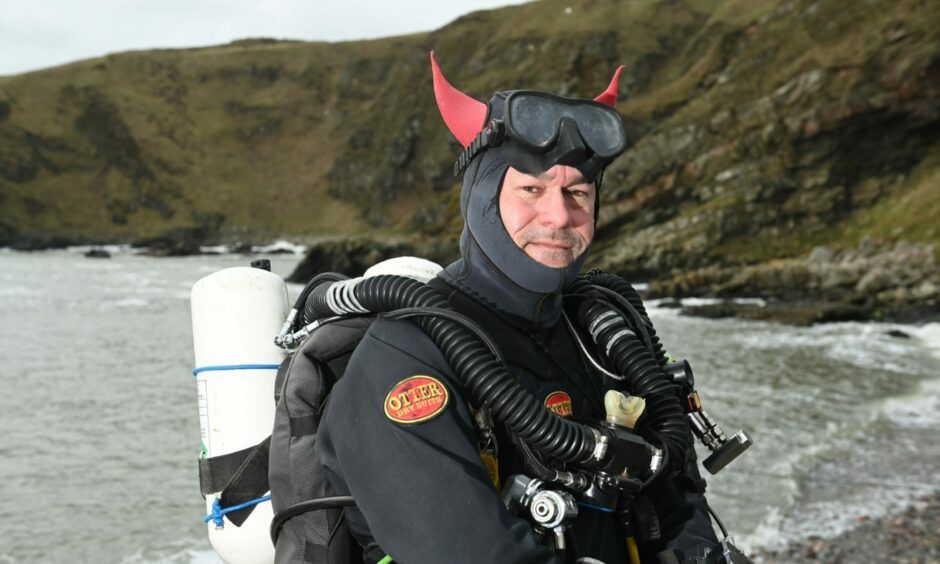
Kneeling on the seabed while staring up at the Titanic-like bow of the torpedoed Empire Heritage was an otherworldly experience that stirred something deep inside Alex Gallego.
Attacked by a German submarine in September 1944, the mighty ship – en route from New York to Liverpool carrying a heavy cargo of war supplies – sank like a stone with the loss of 113 lives.
Exploring the watery graveyard, which is regarded as one of Europe’s best dive sites, Alex could have been forgiven for finding it an eerie experience, especially as the military tanks and trucks are still visible scattered on the seabed next to the wreck.
But instead, the 59-year-old diver from Aberdeen felt a wave of calm wash over him as he explored the shipwreck off Malin Head in Ireland.
“It was reasonably deep, about 60 to 70 metres in depth, but the visibility was very clear so it was a brilliant experience,” says Alex.
“I remember kneeling on the sea bed and looking up to the bow of the ship, it was like Titanic – amazing.
“There’s a huge amount of wrecks just off Malin Head which are in really good condition.”
From Spain to Aberdeen
Growing up next to the Atlantic Ocean in Bilbao, the heart of the Basque Country in Northern Spain, Alex was destined to have a strong affinity with the sea and what lies beneath it.
“What fascinates me about the sea is that it’s just a very different world on your doorstep,” says Alex.
“I was in my twenties studying at university in Spain when I first started diving and I’ve not stopped since.”
Taking the plunge, free-spirited Alex left Spain and moved to Bangor in Wales to study for a Masters degree before he eventually moved to Aberdeen in 1990.
Chilled-out
As Alex navigated the ebbs and flows of life, working as a marine science oceanographer while setting up home in Aberdeen with his family, diving always kept him anchored.
“Diving is quite relaxing,” says Alex.
“Once you’re comfortable with it, it’s like driving as it becomes second nature.”
And nothing makes Alex happier than being at the bottom of the seabed exploring shipwrecks.
“Quite often ships which have sunk have resulted in the loss of life so some people find diving the wrecks eerie, but I don’t,” says Alex.
“I look at them as artificial reefs as you get quite a lot of sea life growing on them.
“If the wrecks are quite in tact and you go inside it is amazing as the shipwrecks are like time capsules.”
Fascinating shipwrecks
One of the memorable shipwrecks Alex has explored is just off the coast of Shetland.
“There’s lots of shipwrecks in Shetland,” says Alex.
“One boat hit a lighthouse and then broke in two, so the bow section of that ship is sitting in 40 metres of water.
“It’s quite in tact so it’s fascinating.”
Diving memories flooding back to him, Alex was also captivated by The Refrigerated Passenger Cargo Steamship RMS Remuera which sank just off Rattray Head in Peterhead on August 26 1940.
Exhilarating experience
The ship had been en route from New Zealand to London when she was attacked by German aircraft.
She took some time to sink, allowing all 93 crew to evacuate the ship.
“It’s in fairly good condition,” says Alex.
“It’s quite a big ship and it’s around 60 metres deep so it’s not the kind of thing that your ordinary leisure diver does.
“It was a very nice wreck to explore.”
Struggling to find the right words to describe the exhilaration he feels when swimming through the shipwrecks, Alex speaks the same deep-sea language as his friends at the Grampian branch of the Scottish Sub Aqua Club (SSAC).
Together with training up the next generation of divers, the group regularly enjoy exploring underwater sites across the north and north-east.
“Most of the diving we do is in the Moray coast because Aberdeen is quite silty, but round the corner in the Moray coast you get much better visibility,” says Alex.
“We’ve dived in lots of places around Scotland.
“We tend to go to Orkney at least once a year around November time to Scapa Flow to dive the shipwrecks there.”
Over the years, Alex has also come face to face with a lot of sea life.
“You see large lobsters and big cod,” he says.
“Shipwrecks are like a refuge for sea life.
“Sometimes you even find seals in deep shipwrecks.”
Sharks
Alex also kept his calm when he came up close to sharks during a diving expedition to Norway.
“I did a week’s diving in Norway last summer,” says Alex.
“One of the dive sites must’ve been the mating area for sharks because there were loads of female sharks who were pregnant as you could see their round bellies.
“They weren’t very big, the biggest sharks were about a metre and a half in size.
“And besides, they eat molluscs (snails, slugs, limpets) so they wouldn’t be interested in eating a diver.
“They were just curious.”
Alex, who lives with his wife Louise and son Luk, 15, in Aberdeen, has one dive site at the top of his bucket list.
“I would love to dive in the Chuuk Lagoon in the Pacific,” says Alex.
“It’s a place with lots of Japanese shipwrecks.”
For more information about the Grampian branch of the Scottish Sub Aqua Club visit the website
scotsac.com/branches/grampian
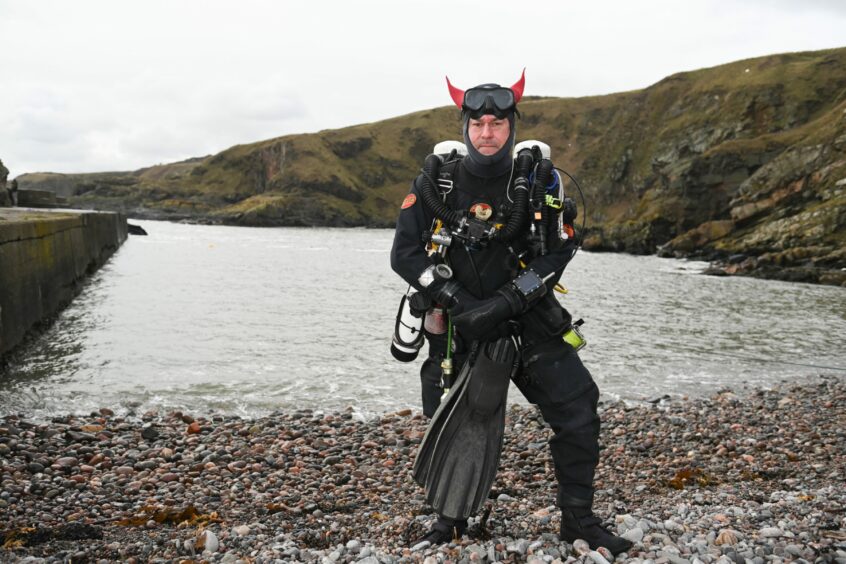
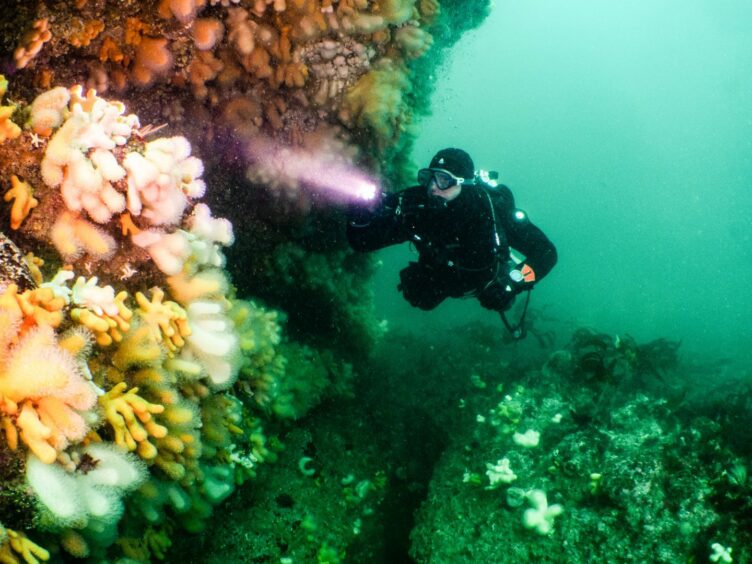

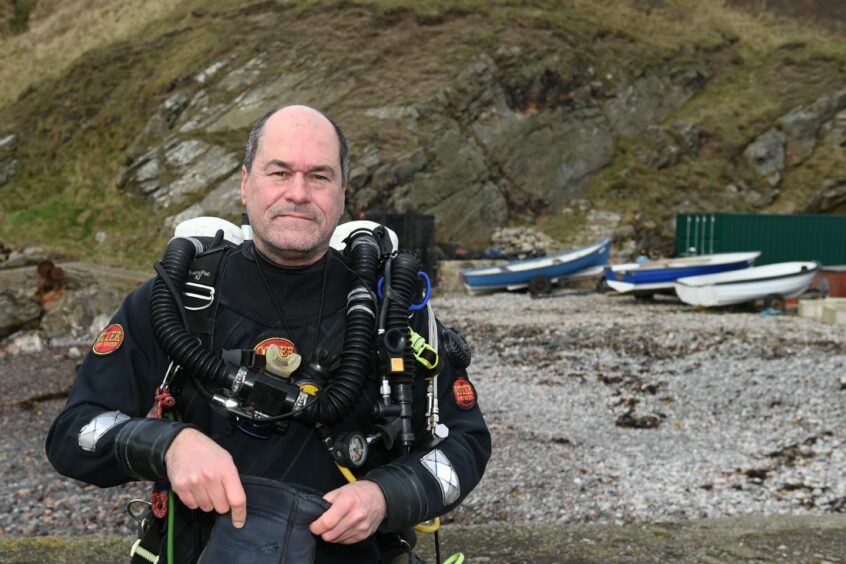
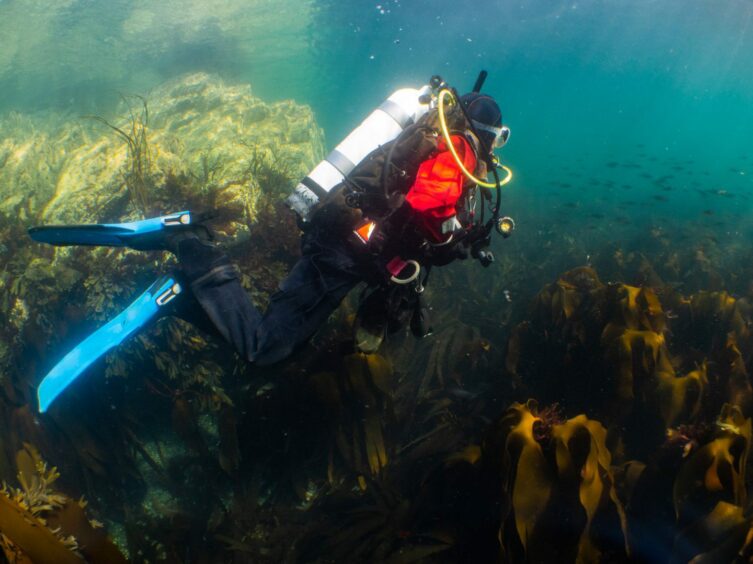
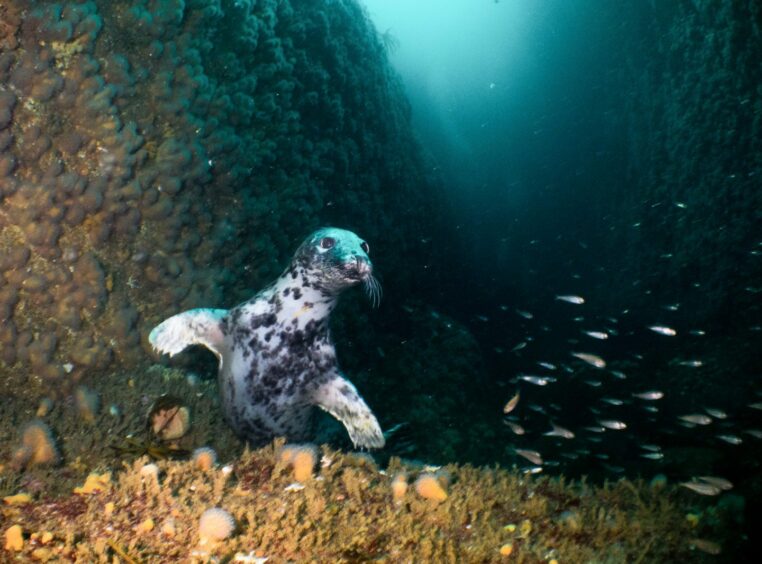
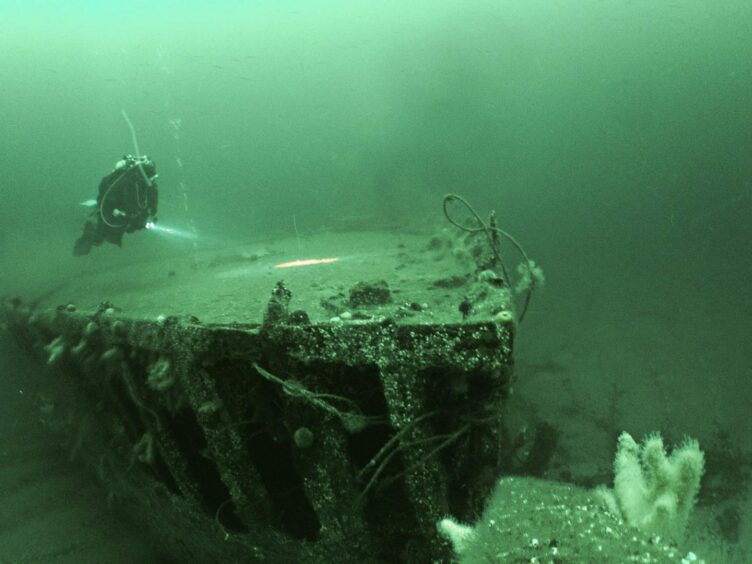

Conversation